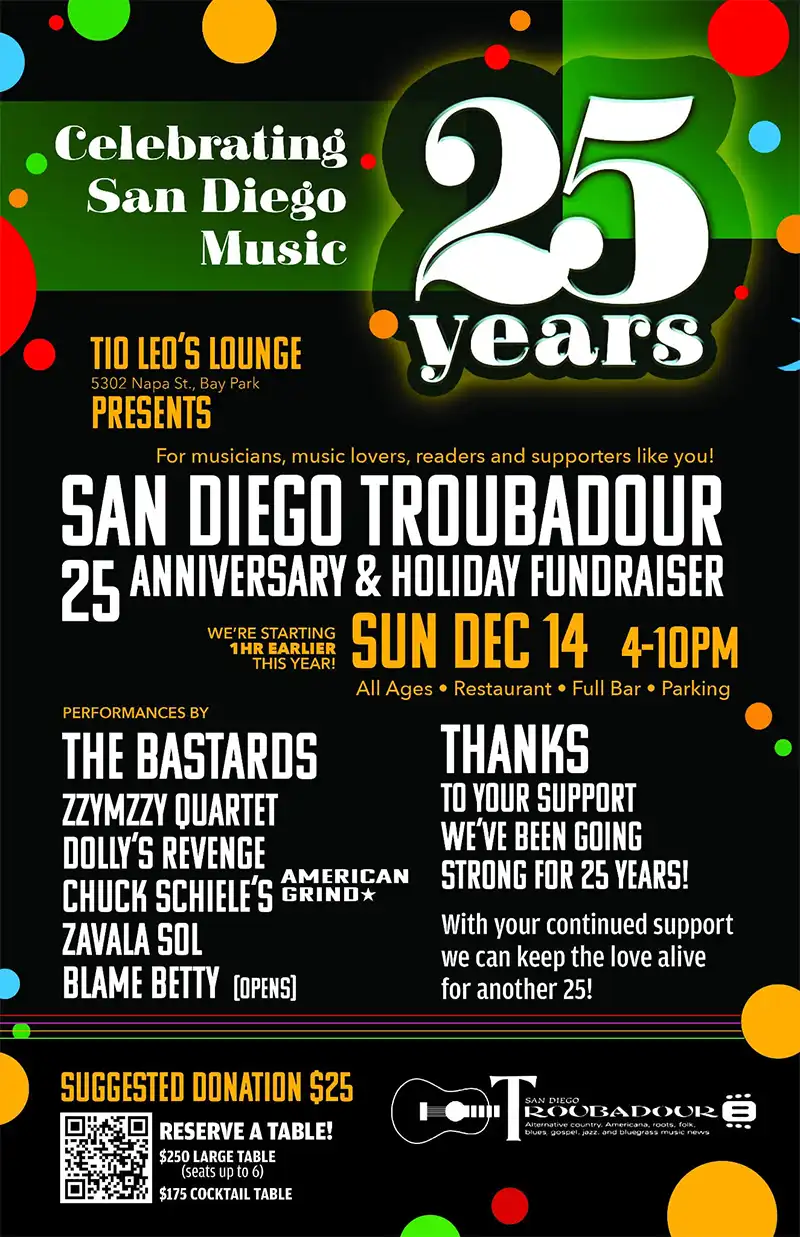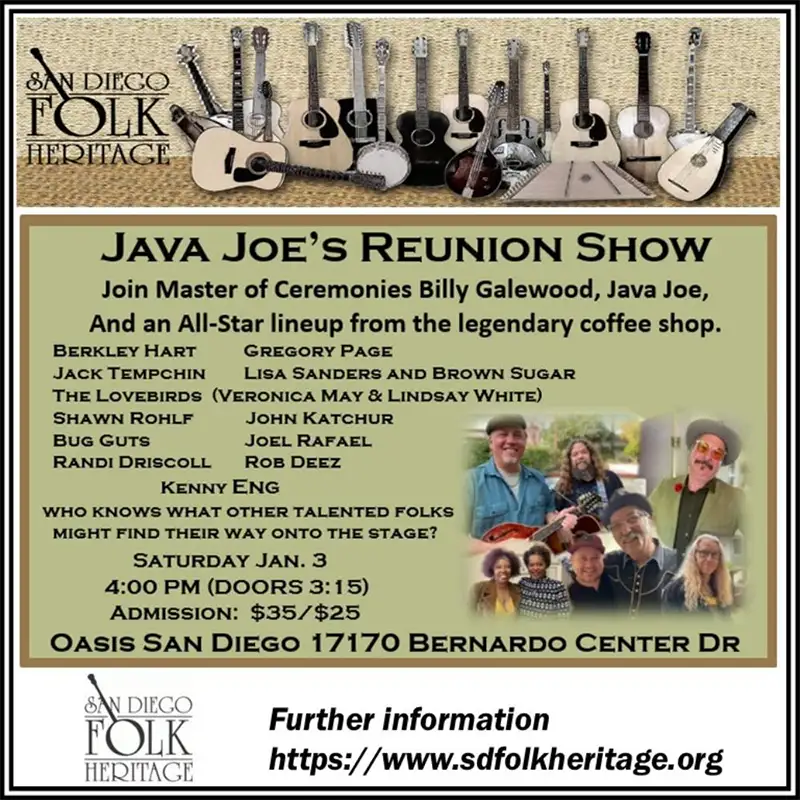Featured Stories
Jug Band Music: An American Tradition Alive and Well in San Diego
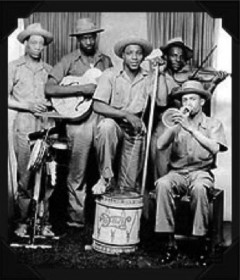
Memphis jug band in the 1920s
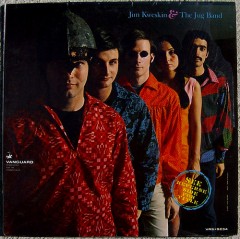
Jim Kweskin & the Jug Band album cover
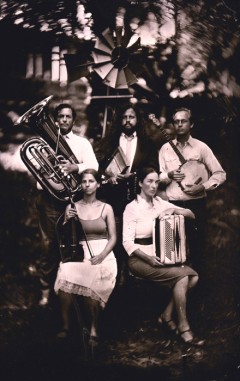
San Diego’s G Burns Jug Band
You might say all American roots music came from jug band music. If you did say that, you’d be kinda right. Certainly, bluegrass, country, blues, Americana, and other forms of roots music have been influenced by jug band music even if their origins lie elsewhere. So, what is this cacophony of music called jug band?
Originating in the 1920s or earlier, jug band music is characterized by non-electric, often homemade instruments. A jug, of course, is typically included, with the player blowing across the top to generate bass sounds. The namesake jug was originally included as a novelty item and was usually of the variety used for storing corn liquor. Also common to the early jug bands were homemade kazoos (combs and paper), washboards, spoons, early banjos (having come from Africa with the slave trade and known as “banjers”), and other common items found around the house or farm that could produce rhythmic sounds.
An early jug band might also include a guitar or mandolin made from the discarded neck of an old guitar attached to some type of gourd, and you might even find a section of stove pipe played like a jug, by blowing across the opening to produce bass notes. You get the idea — this was authentic, home-grown music that didn’t require a big cash investment and that featured a raucous, upbeat sound.
Early jug bands of the 1920s to reach prominence played dance music and caught the ear of some of the earliest American recording artists. The first jug bands to be heard on record were the Louisville and Birmingham jug bands whose recordings appear on Jimmie Rodgers records as well as on the recordings of vaudeville singer Sarah Martin. The city of Memphis was an early home to its own offshoot of jug band music, showing an emphasis on blues influences and African American music.
Jug band music took a big hit in the depression era of the 1930s when radio rose to prominence and began to heavily influence folks’ listening habits. The rise of radio also had a huge impact on the recording industry. Fortunately, however, in the folk revival of the 1950s and ’60s there was a rekindling of interest in jug band music. One of the first recordings from this era was by the Orange Blossom Five released in 1958. In 1963 Gus Cannon’s “Walk Right In” reached number one air play status for the Rooftop Singers, the only time a jug band tune achieved that pinnacle of popularity. The resurgence of interest in jug band music during this era spawned several new jug bands that rose to prominence, in particular Jim Kweskin and the Jug Band, which recorded for Vanguard records, and the New York-based Even Dozen Jug Band, recording on the Elektra label.
Several of the players in these two resurgent jug bands went on to become household names, including four from the Jim Kweskin Jug Band: Bill Keith (banjo and pedal steel player for several of the top bluegrass and other style bands), and Jim Kweskin, along with Maria and Jeff Muldaur, each of whom had impressive careers.
The Even Dozen Jug Band featured David Grissman, Stefan Grossman, Steve Katz, and John Sebastian. Grissman went on to found his own Dawg Music, Stefan Grossman became one of the most prominent finger-style guitar players, Steve Katz went on to join Blood, Sweat and Tears, and John Sebastian founded the popular 1960’s group the Lovin’ Spoonful. Other groups of that era also came from, or were influenced by, jug band music including Country Joe and the Fish and Credence Clearwater Revival. Credence Clearwater Revival recorded a jug band tribute called “Willie and Poor Boys.” Bob Weir of the Grateful Dead and Taj Mahal were, and still are, big fans of jug band music.
Jug bands continue today, with John Sebastian still leading the J-Band. Some of these modern groups stick to the traditional jug band sound from the ’20s, and some have branched out to include other styles including pop, jazz, and even classical music. Modern jug bands can be heard in festivals and jug band competitions around the country.
Here in San Diego we have our very own jug band, the G Burns Jug Band. The band includes Clinton Davis, guitar, tenor banjo, and vocals; Batya MacAdam-Somer, fiddle and vocals; Meghann Welsh, accordion and vocals; Jonathan Piper, tuba; and Sean Francis Conway, percussion, and vocals.
The group mixes the traditional sounds of Louisville and Memphis jug bands, with the sounds of North Georgia fiddlers, Texas singers, early country music, and a dash of bluegrass stirred in. You can visit the band at its website: gburnsjugband.com and you can see and hear them perform locally at the Black Cat Bar every first Saturday of the month and at the Seven Grand Bar, as well as at the Adams Avenue Street Fair and other roots-oriented events. On Sunday, December 1, the group can be found at the SoNo Festival and Chili Cook-off fundraiser performing on the stage at Thorn and 32nd Streets at 11:30am.
Clinton Davis of the band says the name “G Burns” comes from one of the band’s favorite songs — “G Burns Is Going to Rise Again” from the 1920s, even though the tune is not a jug band number. The band expects to be releasing its first CD next year and is planning a West Coast tour as well. Three of the band members are UCSD grad students or UCSD graduates, and they play a variety of music and instruments. Stop by the Black Cat Bar on Saturday, December 7 at 4646 University Avenue and catch the band at 10:30pm playing with Adam Tinkle on saxophone.
Be ready for some fun if you go to hear this great group. Bring your dancing shoes and a smile!


